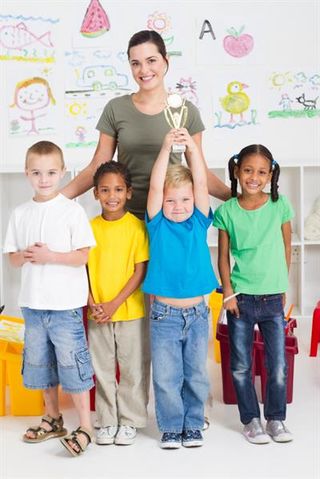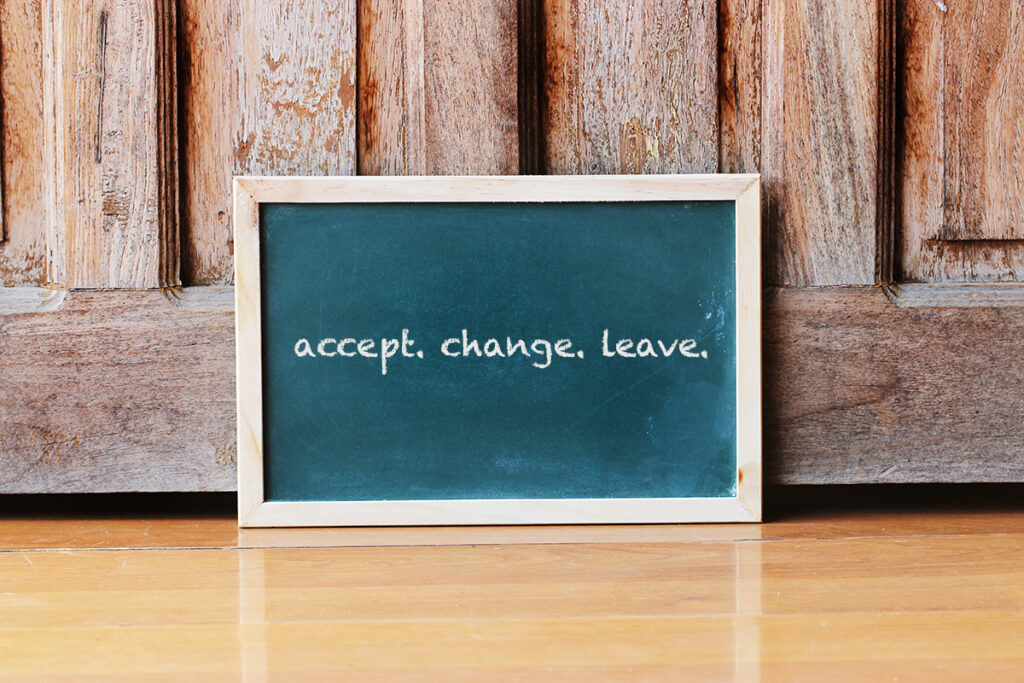10 Tips for Peaceful Classroom Teaching
Yes, peaceful parenting ideas can work in a classroom.
Posted Aug 29, 2019
"I'm a teacher of 4 to 5-year-olds. I made the decision that I wouldn't do time-outs with kids anymore and now I'd never go back. I always knew the teacher sets the tone for the classroom, but the results of my no time-out experiment blew me away. I was more respectful with the kids and their needs as a classroom management tool, and then as their needs were acknowledged, the kids became more respectful of each other.
I was forced to address the real problems behind behaviors, and kids started to try to solve problems themselves in real ways too, not just to get the result they wanted. Basically, I showed I cared more about them as people and they started to feel respected and were more respectful of each other. If I ever get the opportunity to do a Ph.D. in education, it will be on this topic in some way. That's how amazing my results have been." —Erin

Source: iStock/Used with Permission
I'm often asked whether peaceful parentingideas can work in a classroom. As Erin so eloquently testifies, the answer is yes! Of course, it isn't easy. It takes regulating ourselves as the adult in the situation. It takes patience. Sometimes you really can't help a child with her emotions because you have 20+ more who need you. And as every teacher knows, what happens at home will always affect the child's behavior at school.
But all humans respond to respect. And even very young children love to contribute to the group and to find solutions to problems.
I've been told by teachers I respect that we can be guided by the same ideas that guide us in parenting peacefully. For instance, any classroom of children would benefit if we, the adults in the room, could remember that:
1. Children follow our lead. If we get anxious and raise our voice, so will they. If we communicate with our calm that it's not an emergency and we will figure things out together, they will learn emotional regulation more quickly. If we apologize when we make mistakes, they'll learn to do the same. If we treat them with respect and empathy, they'll treat others with respect and empathy.
2. Children respond to connection. Children are designed to orient themselves around their parents. When kids come to school, they look for an adult to follow. To be the adult a child wants to follow, connect warmly to that child. When she gets dysregulated, start by connecting with her to restore safety to the situation. Sometimes, that's all a child needs to pull herself together.
3. Children respond better to coaching than to control. All humans resist being pushed around, and children are no exception. But children are very interested in questions of fairness (as any parent of more than one child can attest!) So why not talk to 3-year-olds about what rules the classroom needs, and why? Don't worry, they won't advocate a free for all. In fact, kids will usually offer many more rules than you will think are necessary. But when children are involved in making the rules, they're much more likely to "own" and follow them.
Write and post the agreed-upon rules (keeping them to a minimum so the children can remember them), point to the rules as necessary as you remind the children of them, and be open to helping the children revise and add new rules as the need develops.
4. Preventive maintenance prevents breakdowns. Since teachers can't just drop everything and respond to a child who is having a breakdown, it's critical to build in preventive maintenance. When you can, respond with empathy to what each child expresses. Be sure you connect with each child daily, even for just a short time. If you see trouble brewing, try to address it before the child gets dysregulated by connecting with him and listening to what he's upset about. Remember that laughter and silliness can often diffuse a situation that's getting tense. In fact, after children get a chance to laugh out loud, it reduces the stress hormones circulating in their bloodstreams and helps them settle down and cooperate.
5. Empathy can be a magic wand. "I often do pull-outs to work with children one-on-one or in small groups. I've found that connecting by listening to the students' various "complaints" or worries (about any old thing that is bothering them) for a dedicated five minutes before we start the academics works wonders! Once they've unloaded they're much more ready to focus. I almost never offer advice or solve problems, but just listen with empathy. I often say, 'Boy, that doesn't sound fair,' and it's almost a silver bullet." —Christy
6. Children have a reason for what they do. It may not be a good reason, but if we want to change behavior, it helps to understand that the child isn't just trying to drive us crazy. So while it's unacceptable for a child to hum loudly as he works, kick the desk in front of him, or push the child behind him in line, he has a reason. (Maybe the humming helps him focus, he kicks the desk because he has so much pent-up energy, and the child behind was standing too close for his comfort.) Of course, you need to set limits to keep all the children in your class safe and focused. But understanding that the child has a reason will help you set the limit in a way the child is more likely to follow.
7. Children want a chance to repair infractions, so they can feel good about themselves. Talk to the class about how to repair mistakes. When a child hurts another child, what's the best way to repair that relationship? Punish the child who did the hurting? Or help that child make amends? How can we facilitate a discussion so that both children can learn to express their needs without attacking the other child? You'll learn a lot from hearing the children talk about this. And you'll end up with a protocol to help prevent and address altercations, one that doesn't include punishment.
8. When children get dysregulated, they need support to restore their equilibrium. Putting children in time-out makes them feel bad about themselves, and doesn't help them regulate themselves the next time. Instead, try helping kids learn to monitor their own emotions and self-regulate with a "Cozy Corner." Instead of a shaming place like the time-out chair, make it a positive space that the children enjoy, and can take themselves to when they need to "find their calm place" inside. Get the kids talking about what helps them calm down when they're upset, and practice in class "finding your calm place inside" using breathing, mantras, and other tools that kids can use themselves. (Here's a great video of Big Bird using his powerful imagination to create a safe place for himself. It's the first video at this link.)
When a child is upset, listen, empathize, and help her feel connected. Then, ask her if it would help her to take a few minutes in the Cozy Corner to feel better. If you need to have a conversation with her about what she might choose to do differently next time, wait until she's ready to bring herself out of the Cozy Corner and feeling better. And then, instead of lecturing, start by connecting. "That was a hard situation. You were upset. Right?" Once she tells you all the things that were upsetting her, and you acknowledge her perspective, she'll be open to discussing more constructive responses.
9. When children's needs are met, they're ready to cooperate. Most "misbehavior" results from a child's needs not being met. For instance, a child who acts out in line might get dysregulated with transitions, so he needs to hold the teacher's hand as the line leaves the classroom. A child who finds it hard to say goodbye to parents and responds by starting trouble might need a special job near the teacher so he can connect and feel valued as he begins his school day. All children need to move, often, and it can be very hard for some kids to sit still and focus for long without activity. It can be tough to figure out what a child needs in a given situation, but if we watch and listen, children will often show us. And our commitment to supporting the child to meet his needs in a healthier way may get him on track for the rest of his life.
10. Children live up—or down—to our expectations. Children see themselves reflected in our eyes, and they assume we're right about who they are. Most adults have a story about a teacher who made a big difference in our lives. Invariably, that teacher believed in us and helped us live up to our potential. Believing in a child may be the greatest gift we can give them.
I want to close with deep gratitude to every teacher who's committed to both the emotional and intellectual well-being of her students. You're truly making the world a better place.
“I have come to the frightening conclusion that I am the decisive element in the classroom. It is my personal approach that makes the climate, my daily mood that makes the weather. As a teacher, I possess tremendous power to make a child’s life miserable or joyous. I can be a tool of torture or an instrument of inspiration. I can humiliate or heal. It is my response that decides whether a crisis will be escalated or de-escalated and a child is humanized or de-humanized.” —Haim Ginott
Recommended Resources: Dr. Becky Bailey's Conscious Discipline website has many resources for peaceful classrooms, such as Schubert's School. I also recommend The Compassionate Classroom by Sura Hart and Victoria Kindle Hodson, which translates Nonviolent Communication for the classroom, the Positive Discipline in the Classroom books from Jane Nelsen and Mindfulness for Teachers by Patricia Jennings.

No comments:
Post a Comment